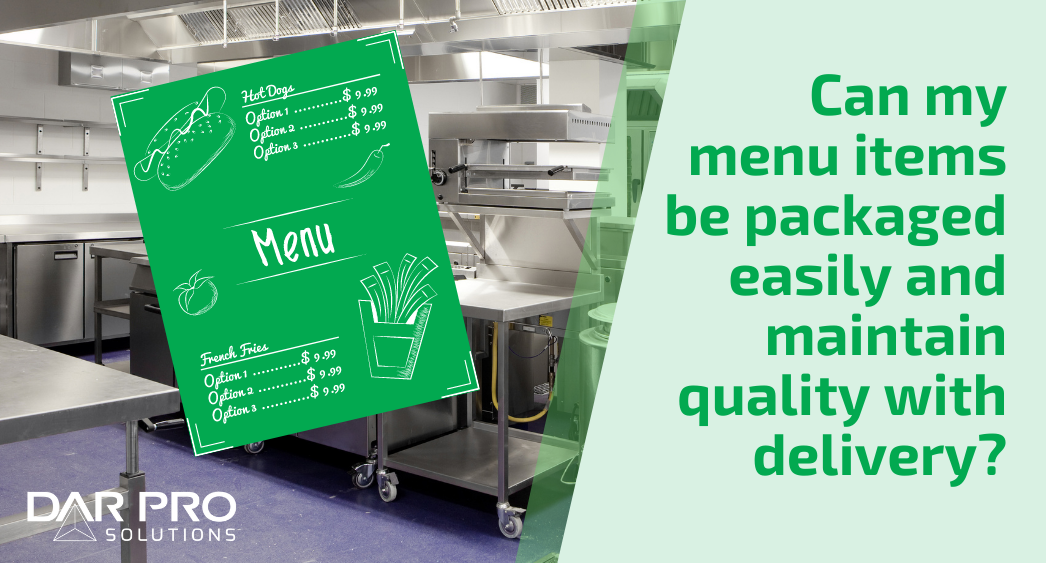What is a ghost kitchen?
First implemented a little over six years ago, a ghost kitchen is a facility in which multiple restaurant brands occupy kitchen space. The idea is to streamline the process, shaving real estate and labor costs while maximizing space and production. Essentially, it is a food court without a dine-in option. Also referred to as cloud kitchens, dark kitchens, virtual kitchens or virtual restaurants, ghost kitchens take on different forms in terms of who runs them, their size, shape and set up.
How did ghost kitchens start?
The pandemic has proved the ghost kitchen model to be efficient, effective and sustainable. It served as a lifeline for some brands as their dine-in options were forced to close and delivery became the only option, but the first ghost kitchens were built and operating at least five years prior to 2020.
The concept was born out of necessity as the demand for delivery-meal options increased and the use of third-party delivery apps became more popular. It allowed restaurants to serve their call-in and delivery customers without the added cost of a full-sized kitchen in a traditional restaurant. The last 18 months have skyrocketed ghost kitchens’ value and popularity, but they were around before delivery and curbside were consumers’ only predominant options.

What is a ghost kitchen's business model?
Efficiency is the name of the game, and each brand’s kitchen space is a fraction of the size of its normal layout, but that doesn’t mean it isn’t a massive undertaking collectively. Some ghost kitchens house as many as 50 brands at one time.
This is beneficial to restaurant brands for several different reasons, most of which center around not having to manage the continuous upkeep and increased overhead costs that come with brick-and-mortar stores. The kitchen space in which they operate is much smaller than a traditional restaurant kitchen, trimming costs and making the food-production process more efficient.
As ghost kitchens continue to pop up across the country, it also serves as an opportunity for brands to enter new markets without having to endure the cost of opening a traditional store.
Where are ghost kitchens located?
Once located in only a handful of major U.S. cities, ghost kitchens are becoming more common and are now popping up in most all major metropolitan areas with further growth looming in areas that have third-party delivery apps. A lot of times, consumers using these apps may not even know their food is coming from a ghost kitchen as opposed to a traditional store. At the end of 2020, there were an estimated 1,500 ghost kitchens scattered throughout the United States. As demand for delivery intensifies and this concept becomes more popular, ghost kitchens will become even more common.

How are ghost kitchens staffed?
The restaurant brands occupying space within a ghost kitchen hire their own staff to prepare and produce their food, but a lot of ghost kitchens have their own staff to help maintain the facility and tend to certain things in each kitchen space like used cooking oil transfer and storage, general maintenance and other necessary services.
Who operates ghost kitchens?
The short answer is that it varies. There are ghost kitchen providers like Kitchen United, CloudKitchens and Reef that build and operate ghost kitchen infrastructure – meaning they build the facility, set up the kitchen spaces and rent them out to various brands. Some ghost kitchens supply kitchen equipment in each allotted space while others leave it up to the restaurants to furnish the space with their own equipment.
Some third-party delivery apps have gotten into the ghost kitchen market. These apps allow restaurant brands to rent out their space, and the agreement is usually contingent upon that brand using that particular delivery app.
Additionally, restaurant brand owners themselves have begun to get into the ghost kitchen space, often calling it a ‘virtual brand,’ because it differs slightly than a traditional ghost kitchen concept but is very similar in how it works. Think of your favorite restaurant building a delivery-only space and giving it a slightly different name and that is essentially what you have in a virtual brand.
As you can now see ghost kitchens have varying set-ups and operational structures.
What does a ghost kitchen menu look like?
Like anything else, it varies depending on the set up, but a brand’s ghost kitchen menu is generally smaller and more limited than it would be in a traditional store. Most focus on a handful of items that are either the most popular or delivery friendly in the sense that they can be packaged easily and still maintain quality with delivery (or some combination of the two), with the goal being to trim inventory costs. These menus often change based on consumer demand as well, with less inventory on site, frequently altering the menu is made easier.
Ghost kitchens were born out of a shift in demand for how consumers prefer to get their food, and because the current societal conditions have only amplified that demand, they are thriving and becoming more popular than ever.

Want to open a Ghost Kitchen?
If you want to learn more about how to run a ghost kitchen, check out our exclusive interview with a Ghost Kitchen expert. DAR PRO is an industry leader in handling used cooking oil and grease trap services for ghost kitchens and dark kitchens across the country. Reach out to a representative today and find out how your ghost kitchen can benefit from our comprehensive program. Call us 24/7/365 at 855-DAR-PRO1 (855-327-7761).
Contact Sales
For customer service inquiries call our toll free number (855) 327-7761
By submitting this form I agree to the privacy policy including the usage of contact details to contact me for marketing purposes.
8/17/2021
